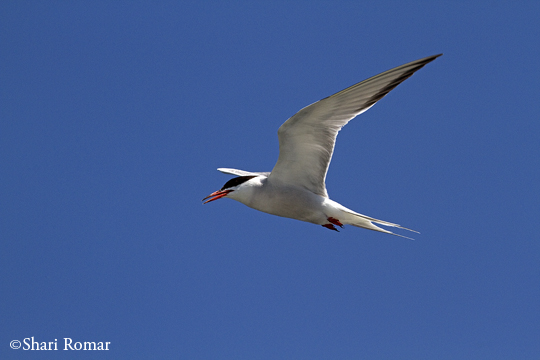Gone Fluking
Harry promised sleep of the gods. This was my first thought when the alarm woke me at an obscene time last Saturday morning. An avid fisherman, our pal Harry said the waking up part was terrible, but come nightfall I could expect a glorious slumber.
I'm far more interested in fish than the activity of fishing (not much of a fish eater and not keen on being the grim reaper). However, and in spite of the early meeting time, I jumped at the chance to join the American Littoral Society's fluke tagging boat trip out of Atlantic Highlands, New Jersey. Now I'd be able pull in that fish, admire it, tag it for research, and let it go!
Though still a bit groggy when we arrived at our boat, the 50-foot Eagle, we perked up soon after meeting Jeff Dement, the personable and knowledgeable fish tagging director. The team was rounded out with Captain Art and terrific mates Jeremy and Pat. Combined with a beautiful summer morning, my alarm clock discontent was quickly wearing off.
We motored out to the Raritan Bay and settled a mile or two from the coast. Novices (like me) were shown how to bait the hook with a tasty mix of squid and spearing (Menidia menidia), then how to drop the line without getting everything tangled. Within minutes, the fluke were biting.
Fluke, aka summer flounder and more formally known as Paralichthys dentatus, are found in our waters until fall when they move out to the Continental Shelf where they spawn and spend winter months. Like other flounder, they have a flat shape for bottom dwelling, but sport eyes on the left side and sharp teeth to prey upon other fish. In their second year, they reach maturity and measure between 15-20" long.
Today we were focused on tagging fluke over 14" (tagging smaller fish can be too stressful on their young bodies). Once caught, the fish are brought to a table where they are calmed with a dark cloth placed over their eyes, then measured and outfitted with an orange tag placed just in front of the tail, before being released back to the water. The size, date, location of catch, and fisherman's name is recorded and later placed in a database so Jeff can monitor the specimen's size and location when it is caught in the future.
Those measuring 18" or more were large enough to be made into dinner ... except the handsome fella I caught! He measured well over 18" and I don't think I made friends with the serious fishermen when I said that I wanted to tag and release rather than keep him. No matter though, I made a fish friend and it was quite a thrill to send him off back into the bay!
But fluke wasn't the only highlight of our seven hour trip. The mates and Jeff pointed out schools of Atlantic Menhaden (Brevoortia tyrannus) as they churned about in the water, a common practice when they are being picked off by a larger fish from below. Large groups of petite Comb Jellies (phyllum Ctenophora) appeared several times around the boat, and we had a murky sighting of a very large jelly that looked like its sting could pack a whallop. And the Sea Robins (family Triglidae)! Unattractive to many, I find them stunning, prehistoric-like fish and welcomed the chance to see so many of them close up.
The day was not relegated only to fins -- feathers were a raucous accompaniment to the entire outing! Terns, terns and more terns, along with gulls, gulls, and gulls. Couple glimpses of Least Terns (Sterna antillarum) but the Common Terns (Sterna hirundo) made their presence quite known along with Laughing (Larus atricilla), Great Black-backed (Larus marinus), and Herring Gulls (Larus argentatus).
All were spectacular as they sailed around the boat, but I have to list the regular company of three Wilson's Storm-petrels (Oceanites oceanicus) as the treat of the day. A pelagic -- or ocean living -- species, Jeff explained that seeing Storm-petrels in the Bay was a rare occurrence and wondered if the sanitation pump foul-up on the west side of Manhattan a couple weeks earlier might be the reason the birds are foraging so close to shore. Whatever the reason, it was incredible to watch these delicate birds dangle their toes in the water as if dancing so that they could stir up the minute creatures at the water's surface.
The Littoral Society's fish tagging program has been in place since 1965 and Jeff has been at the helm for the last four years. He was pleased with our work that day, and our contribution to the approximately 25,000 fish tagged annually. Besides fluke, other popular tagging fish include Striped Bass, Bluefish and Winter Flounder, caught all along the Atlantic coastline. Jeff's enthusiasm and dedication to these fish and this program was palatable. Talking to him was an education in ichthyology in itself, but he was also so knowledgeable about birds and plants. He, along with Captain Art, and ship's mates Jeremy and Pat were extraordinary ambassadors to our local creatures and watery landscapes.
By the end of our trip, we tagged around 80 fluke, released about the same number of small ones, and I'm not even sure how many were keepers. A successful day I considered, as I drifted into a sleep that would make Neptune proud.















